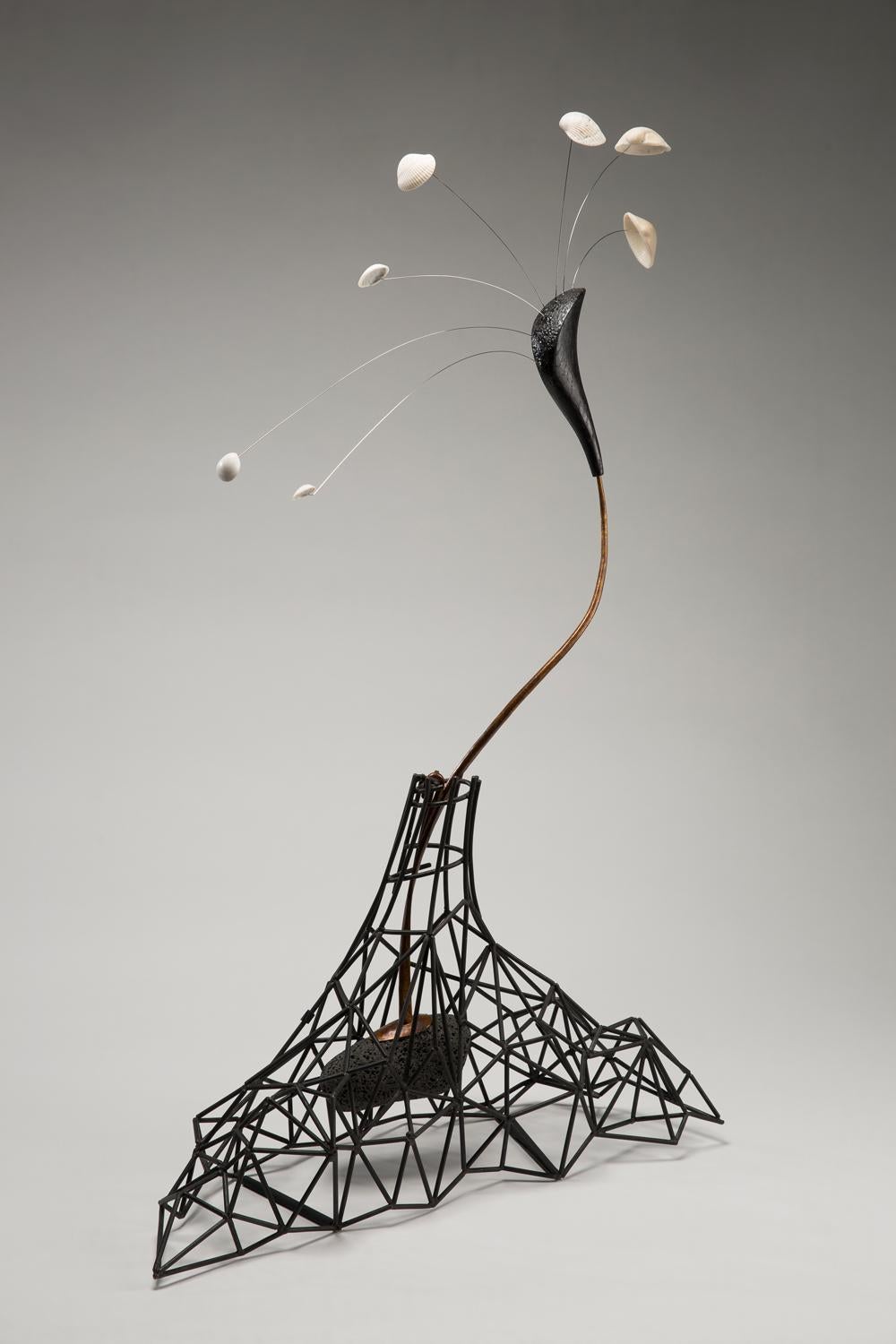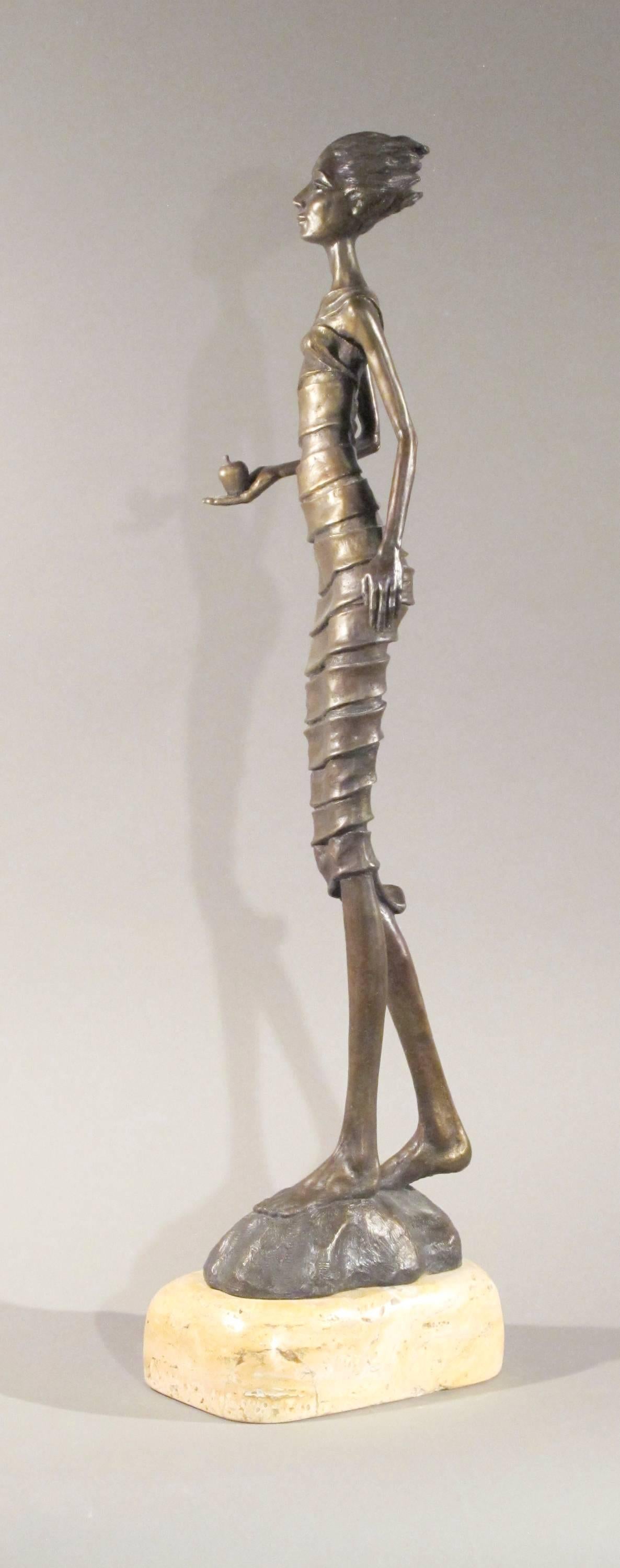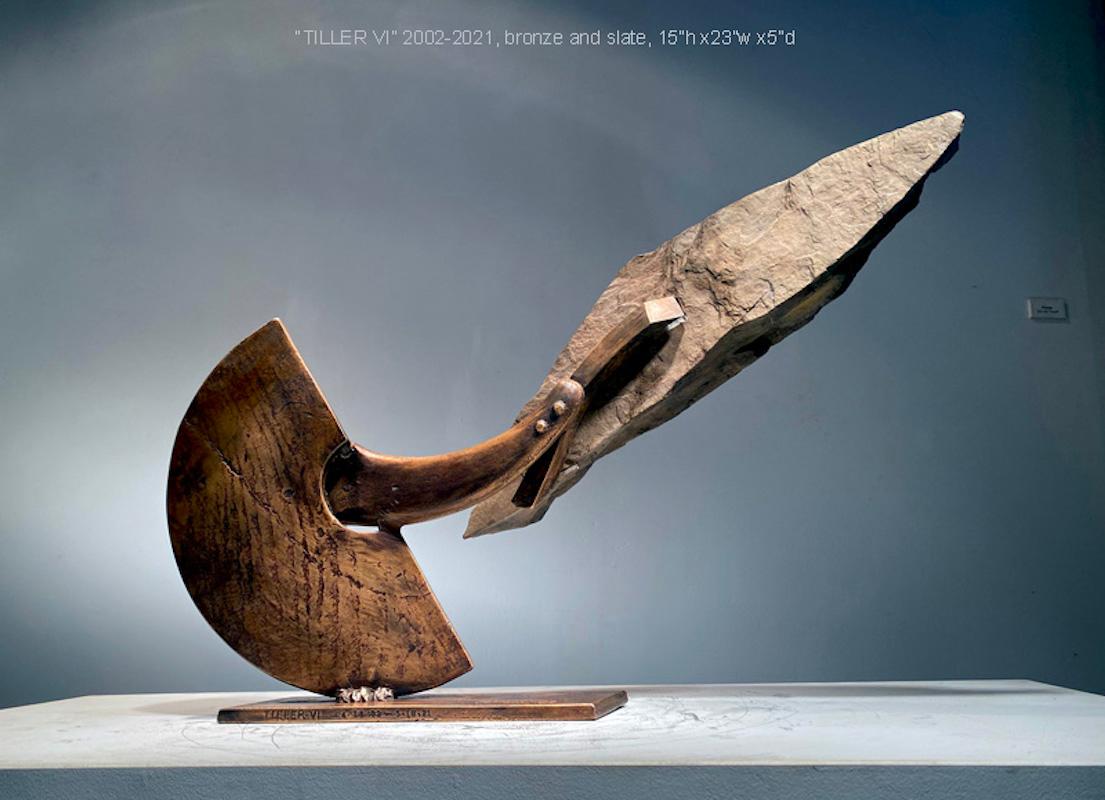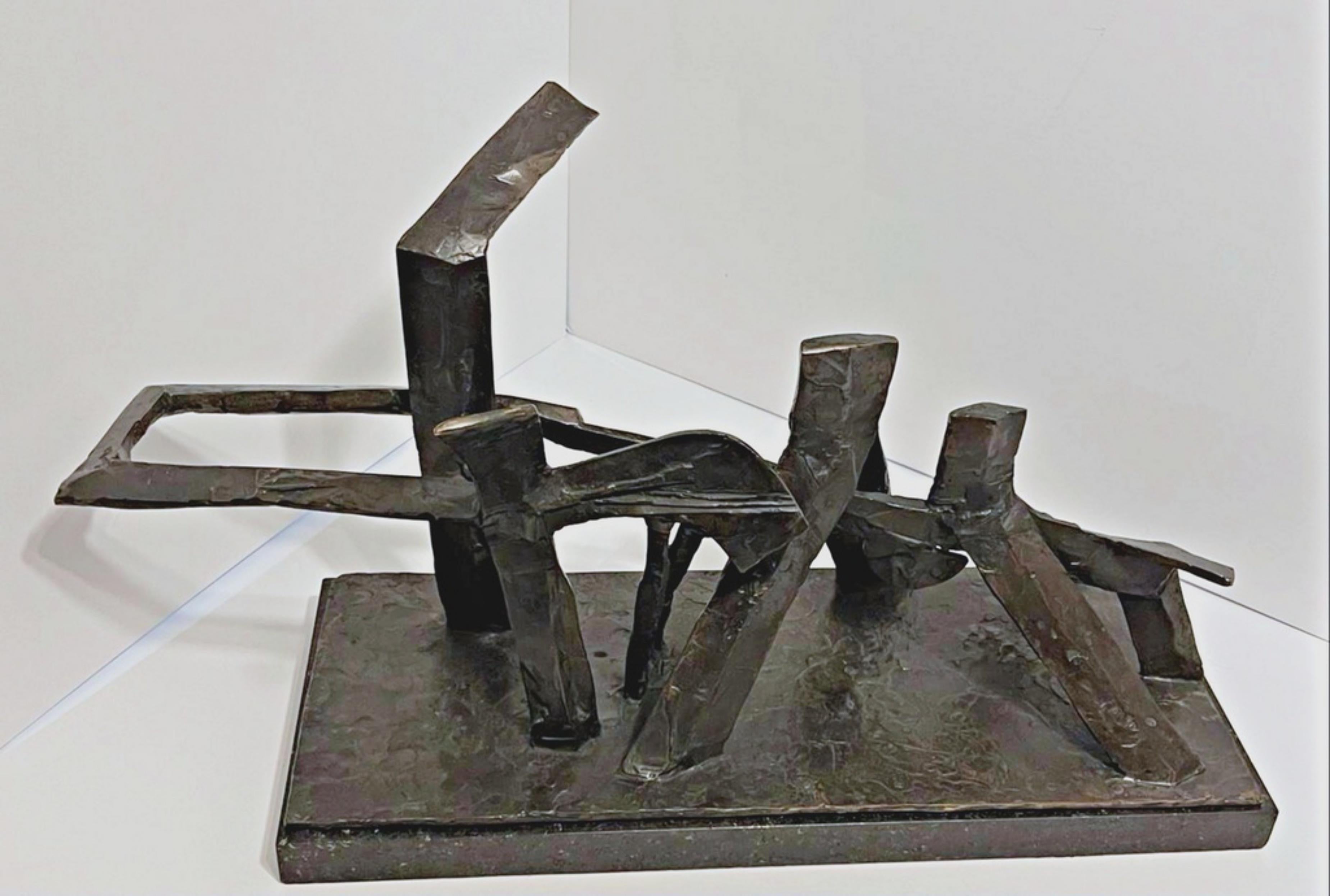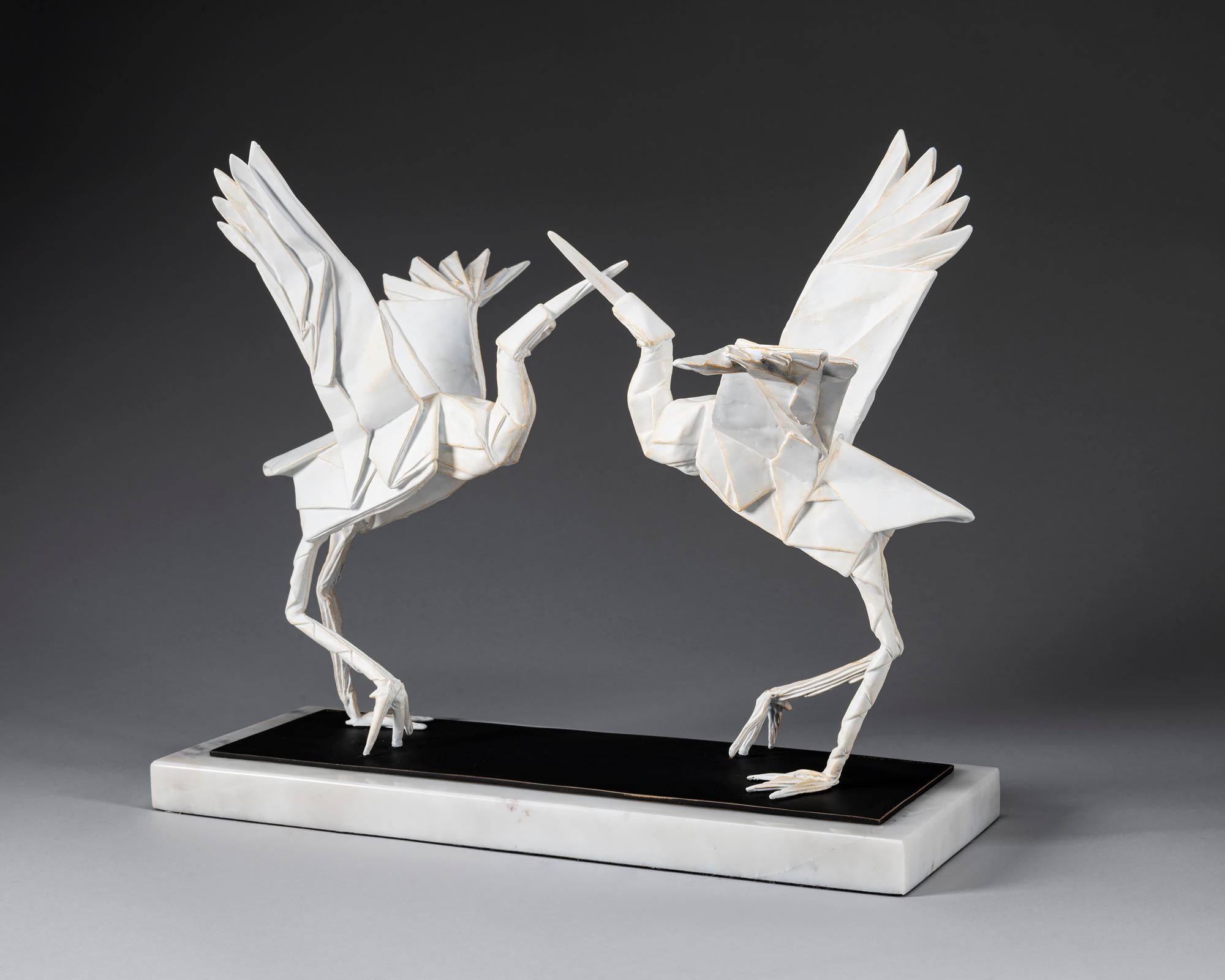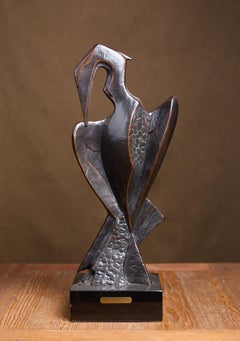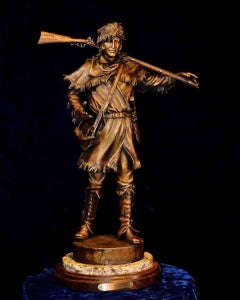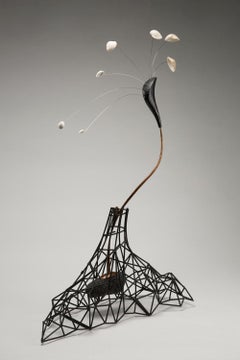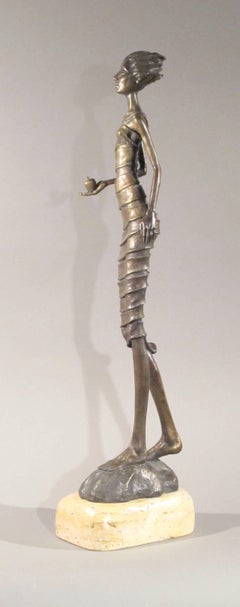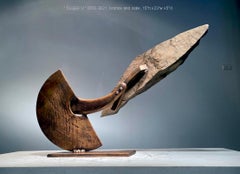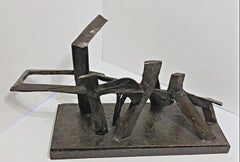Items Similar to Savannah Stroll
Want more images or videos?
Request additional images or videos from the seller
1 of 2
James H. MooreSavannah Stroll
About the Item
James H. Moore’s Savannah Stroll is a masterfully crafted bronze sculpture that captures the quiet majesty of Elephants in motion. Measuring 16 x 20 x 4 inches and mounted on stone, the piece radiates a sense of balance, grace, and stillness, as if freezing a fleeting moment in time. Moore, a self-taught sculptor who transitioned from painting to bronze in 1980, is known for his ability to express both strength and subtlety in animal form. The bronze's rich patina and the natural texture of the stone base enhance the organic realism of the work. Ideal for collectors drawn to Western or wildlife art, this sculpture speaks to Moore’s deep reverence for the animal kingdom and the beauty of the untamed world.
About the Seller
New to 1stDibs
Joined in the past six months.
No Reviews Yet
Vetted Professional Seller
Every seller passes strict standards for authenticity and reliability
1stDibs seller since 2025
- ShippingRetrieving quote...Shipping from: Wimberley, TX
- Return Policy
Authenticity Guarantee
In the unlikely event there’s an issue with an item’s authenticity, contact us within 1 year for a full refund. DetailsMoney-Back Guarantee
If your item is not as described, is damaged in transit, or does not arrive, contact us within 7 days for a full refund. Details24-Hour Cancellation
You have a 24-hour grace period in which to reconsider your purchase, with no questions asked.Vetted Professional Sellers
Our world-class sellers must adhere to strict standards for service and quality, maintaining the integrity of our listings.Price-Match Guarantee
If you find that a seller listed the same item for a lower price elsewhere, we’ll match it.Trusted Global Delivery
Our best-in-class carrier network provides specialized shipping options worldwide, including custom delivery.More From This Seller
View AllMom, I Smell Berries
Located in Wimberley, TX
James H. Moore’s "Mom, I Smell Berries" is a striking bronze and stone wall sculpture that captures a tender, momentary glimpse into the wild. The piece features a mother bear and he...
Category
2010s Naturalistic Mixed Media
Materials
Bronze
Prairie Boss
Located in Wimberley, TX
James H. Moore’s Prairie Boss is a refined bronze and mixed media relief that captures the enduring spirit of the American bison. Set within a richly textured backdrop, the compact s...
Category
2010s Naturalistic Mixed Media
Materials
Bronze
Preening Heron
By Kent Ullberg
Located in Wimberley, TX
Kent Ullberg's Preening Heron is a captivating bronze sculpture that offers a refined, stylized interpretation of a great blue heron. Embracing a modern, abstract aesthetic, Ullberg ...
Category
Early 2000s Contemporary Figurative Sculptures
Materials
Bronze
Davy Crocket
Located in Wimberley, TX
George Lundeen's Davy Crockett is a masterful bronze sculpture that pays homage to the legendary American frontiersman and folk hero. Standing 26 inches tall, 18 inches wide, and 10 ...
Category
2010s Figurative Sculptures
Materials
Bronze
Old Man and the Cat
Located in Wimberley, TX
George Lundeen's Old Man and the Cat is a captivating bronze sculpture that pays homage to literary giant Ernest Hemingway. This limited-edition piece, numbered 22 out of 100, measur...
Category
2010s Realist Figurative Sculptures
Materials
Bronze
Turning the Pages (John F. Kennedy)
Located in Wimberley, TX
George Lundeen's Turning the Pages is a captivating bronze sculpture that eloquently captures a tender moment between President John F. Kennedy and his young son, John F. Kennedy Jr....
Category
2010s Figurative Sculptures
Materials
Bronze
You May Also Like
"Creation of Thought" pedestal sculpture
Located in Glen Ellen, CA
Unique pedestal sculpture in welded and stained bronze, lava stone, seashells, and black stained wood.
Jeff Glode Wise makes wildly exuberant sculptures. H...
Category
2010s Contemporary Abstract Sculptures
Materials
Stone, Bronze
First Bite, female figure holding apple, garden of eden, bronze sculpture Williams
By Troy Williams
Located in Santa Fe, NM
First Bite,female figure holding apple,garden of eden,bronze sculpture Williams
First Bite, female figure holding apple, garden of eden, bronze sculpture
Expressing Situations and Beings in Human Form Sculptor Troy Williams unites the timeless and the contemporary in sculptures of rare beauty and meaning Beyond all the narrative potential of the three obvious physical dimensions of Troy Williams’ sculpture there are many other considerations that contribute greatly to the enjoyment, appreciation, and understanding of his entrancing 360-degree works of figurative art. Among these are the emotional responses and intellectual interpretations that first go into the artist’s creative process and then into every subsequent spectator’s viewings at least somewhat differently each time. Some artists insist on leaving these entirely up to each viewer, but Williams is glad to enrich the experience by inviting the viewer in for a little insight into the artist’s intention. Certain ambiguities and unintended provocations might otherwise arise, as Williams uses original combinations of materials or ideas in highly original ways. For the sophisticated clientele of Glenn Green Galleries Williams specializes in figurative and facial sculptures hewn from fallen woods he finds while running near his home in the mountains of north central New Mexico. Williams has in the past worked with exotic woods, but now avoids them in a desire to protect the people, plants, and animals that depend on a vibrant, healthy, and unexploited local ecosystems. Finding dead and downed wood also introduces an element of serendipitous chance into the sculptor’s process of selection and inspiration. Nature provides an exquisite mass of workable solids, surfaces, patterns, and curves in cottonwood and the many varieties of juniper this sculptor favors. Troy Williams simply rescues these from the elements and then elevates them to timeless treasures by relating them to themes that express our deepest nature. Awake to the most beautiful twists, turns, and striations already present in these found mediums, Williams is naturally and passionately drawn to every stage of freeing the underlying sculpture. Following the wood’s ingrained tendencies is always a creative guide for Williams. Growing up in an Indiana farming community, his dad a family practice doctor and his mother an artist, Troy has always felt an affinity for the earth and especially its mountains. He initially came west to study agriculture at Fort Lewis College in Durango, Colorado, attracted there by a setting where his athletic nature could find full expression. His interest in an agriculture career gave way to his love of the mountains. In order to continue living in them and enjoy the hiking, climbing, and running he also loved, Troy worked for several years in a solar business, progressing from manufacturing to installations to design. On a fortuitous errand for a cousin back home, Troy happened into silversmithing and began producing simple, hammered ear cuffs. At this point the artistic nature that he had earlier suppressed in favor of athletics began to emerge strongly, and he expanded into more complex designs as he learned and mastered goldsmithing and lapidary. Another quantum leap occurred when he made his first copper face for a pendant. He couldn’t wait to see the face on a larger scale and was eager for the challenge of learning another art. He began sculpting metal, then stone, then came upon wood as his medium of choice. Wood had immediate allure: scented, expanding, contracting, and seeming to breathe. Williams was seduced by its warmth, the play of light on the complexion of its grain, and the inherent life force so evident in wood. He also learned to coax creative advantage from some of wood’s pitfalls, like soft spots, tricky grains composed of woody xylem and softer phloem; and to avoid the conditions that make it splinter. A quality of segmentation or fragmentation characterizes Williams’s sculptures and provides great visual satisfaction along with intriguing thematic provocation. One is struck by the beautiful outlines that might never be apparent had Williams not removed segments or created interior voids expressly to reveal them. When sculpting a face, Williams focuses on aspects that are mask-like, floating, and alive with contours that might not be visible were the artist to sculpt the full head. The segmentation in his exquisitely refined female figurative works incorporates solids, hollows, and curvilinear elements for reasons that are at once artistic, philosophical, and experiential. Besides attending basic college art classes, to understand more fully the human figure, Troy spent a summer in Europe...
Category
Early 2000s Contemporary Figurative Sculptures
Materials
Limestone, Bronze
John Van Alstine, Tiller VI, Sculpture 2002-2021
By John Van Alstine
Located in Greenwich, CT
Tiller VI
15"h x23"w x5"d
Small
bronze and slate
Stone and metal, usually granite or slate and found object steel are central in my sculpture. The interaction of these materials is ...
Category
21st Century and Contemporary Contemporary Abstract Sculptures
Materials
Slate, Bronze
Uxmal, unique bronze sculpture by Greek-American sculptor and Harvard professor
Located in New York, NY
Dimitri Hadzi
Uxmal, 1991
Cast bronze on custom made granite base
17 × 30 1/2 × 14 inches
The title UXMAL, refers to the ancient Mayan city of Uxmal, which is known for its "Pyramid of the Magician"
Provenance:
Acquired by the original owner from the prestigious Gremillion Gallery in Houston, Texas (accompanied by a copy of the original receipt)
Measurements:
Base:
26.5 by 11 by 1.75 inches
Work longest
30.5 inches
Widest 14 inches
Highest. 17 inches
More about Dimitri Hadzi"
Derived from the figure and mythic narratives, Hadzi’s sculpture references antiquity and classical artifacts – abstracted anatomical forms, columnar and other architectural elements, helmets, weaponry and body armor function as visual metaphors for ancient cultures. “I was interested in mythology, and I was interested in movement,” Hadzi remarked on his years in Rome, “I was attempting through formal methods to exaggerate sexual tension or apprehension. Suddenly I was myself in an atmosphere of freedom.” [1] Powerfully rendered in bronze his sculptures convey raw emotion, brute strength and mass, tempered with a delicate rush of whimsy, vivacity and sensuality.
Born in New York City on March 21, 1921, Hadzi graduated from Cooper Union in 1950 and received a Fulbright Fellowship in the same year. After studying sculpture in Greece, he moved to Rome under the GI Bill where he lived for twenty-five years. Hadzi returned to the U.S. where he taught at Harvard University for fourteen years. He continued to create sculpture until his death in 2006.
Hadzi is included in the permanent collections of the Museum of Modern Art; the Whitney Museum of American Art; the Museum of Fine Arts, Boston; the Hirshhorn Museum and Sculpture Garden; The Phillips Collection and the Guggenheim Museum. Receiving over twenty sculpture commissions, Hadzi’s work appears in public squares, concert halls, federal and private plazas, and universities throughout the world.
---------------
[1] Elsen, Albert. “On Artistic Freedom: An Interview,” Dimitri Hadzi, (New York: Hudson Hills Press, 1996), 30.
Additional Biography:
Dimitri Hadzi (1921 – 2006) is among the most distinguished modernist sculptors, creator of works in bronze and stone that are powerfully abstract and expressionist in character. His contribution to the international language of sculpture continues to influence and inspire through permanent installations and collections, and exhibitions worldwide.
Born to Greek-American immigrant parents in New York City, he had a talent for drawing at an early age and won a prize for his young ability. But, it wasn't until after serving in the Air-force in the South Pacific during WWII that he turned his sights fully to painting and sculpture, going on to study both at Cooper Union. Eventually, he would become a mainstay of the Cambridge, MA art community. He was a Guggenheim Fellow (1957), the winner of the Venice Biennale Award (1962), and the Rome Prize (1974).
His most notable sculptures are: Copley Place Waterfall (Boston, MA), Owen Glass Co. (Toledo, OH), as well as Thermopolis, adjacent to Boston’s City Hall Plaza, and the former Omphalos in Harvard Square (Cambridge, MA).
Hadzi is included in the permanent collections of the Museum of Modern Art; National Gallery of Art; Whitney Museum of American Art; Museum of Fine Art, Boston; Hirshhorn Museum and Sculpture Garden; The Phillips Collection and the Guggenheim Museum.
Additionally, Hadzi was also a prolific painter, and printmaker. He also taught at Harvard University for over a decade. Famously, David Hockney attended one of Hadzi’s classes at the Carpenter Center at Harvard, where Hadzi served as director. The two of them spent time together painting and discussing techniques. Hockney gifted Hadzi one of his paintings.
He worked alongside his good friend, Nobel Prize winning Irish poet...
Category
1990s Abstract Abstract Sculptures
Materials
Granite, Bronze
Lifting Peace 2/24
By Kevin Box
Located in Napa, CA
“It took two years of tireless experimentation for me to develop the process of casting paper into bronze, another seven years to perfect, and it continues to evolve today.” - Kevin...
Category
2010s Contemporary Figurative Sculptures
Materials
Marble, Bronze, Stainless Steel
Courting Cranes 2/50- Kevin Box and Robert J. Lang
By Kevin Box
Located in Napa, CA
“It took two years of tireless experimentation for me to develop the process of casting paper into bronze, another seven years to perfect, and it continues to evolve today.” - Kevin...
Category
2010s Contemporary Figurative Sculptures
Materials
Marble, Bronze
